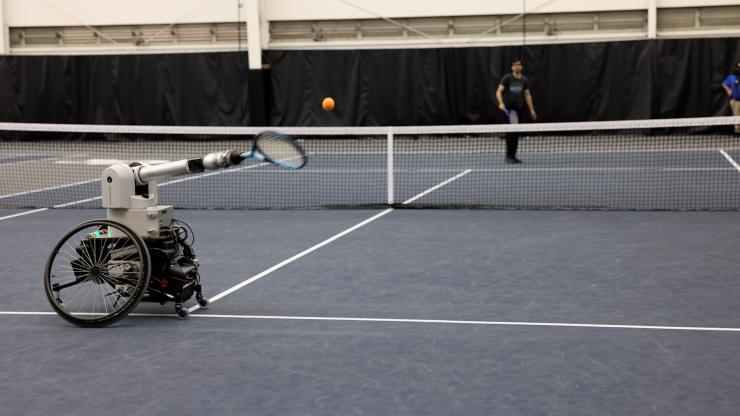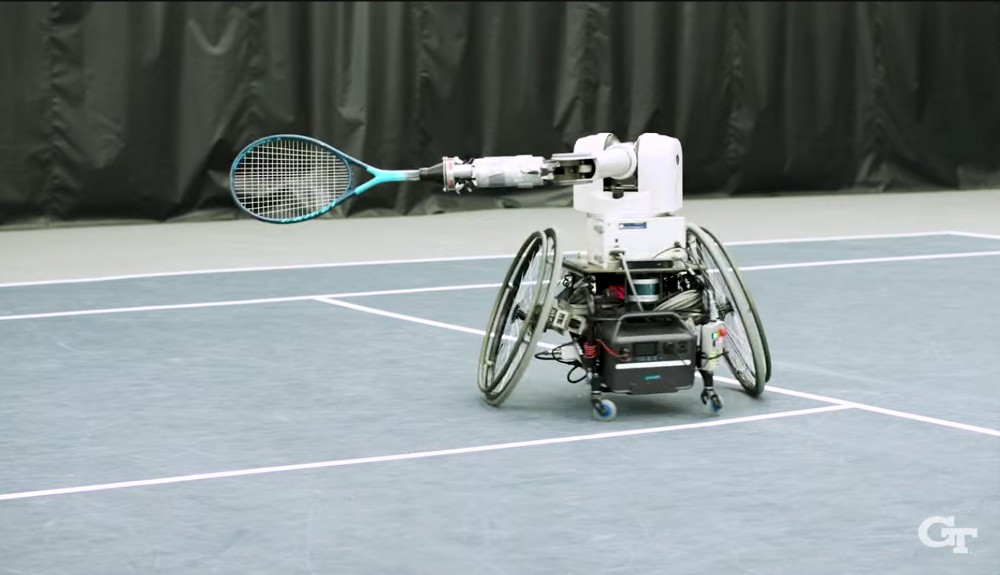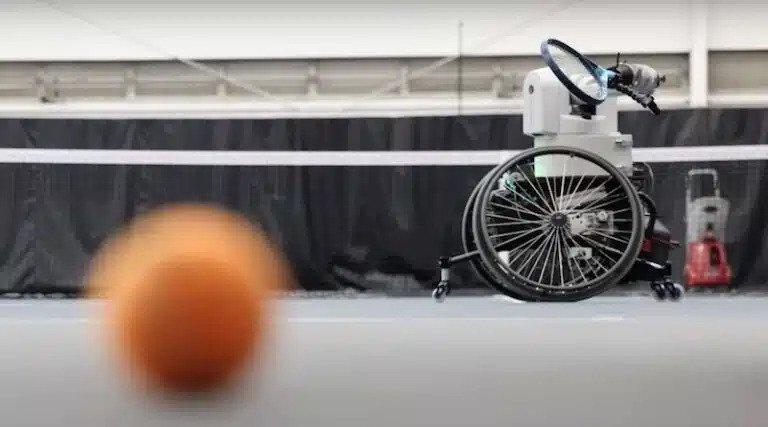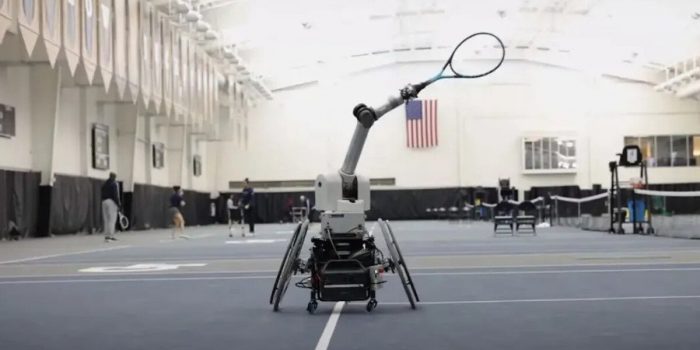Dr. Matthew Gombolay, an assistant professor at the Georgia Institute of Technology, has created a special robot called ESTHER that can play tennis with humans. He believes that in the future, robots like ESTHER will play a vital role in sports and athletic training.
Unlike traditional tennis ball machines, ESTHER is designed to imitate human opponents, making it more realistic and effective for athletes to practice against. Dr. Gombolay wanted to create a robot that could adapt to different playing styles and take advantage of a player’s weaknesses. To solve the challenge of moving the robot on the tennis court, he took inspiration from wheelchairs used in wheelchair tennis.

It took Dr. Gombolay and his team two years of hard work and collaboration with over 20 students to build ESTHER. The robot can now locate an incoming tennis ball and consistently hit it back. Although ESTHER is not as skilled as the famous wheelchair tennis player Esther Vergeer, the ability to create a human-scale robot that can return shots is a significant accomplishment.

ESTHER is equipped with two motors and a gearbox that allow it to move quickly and cover both sides of the tennis court. The biggest challenge lies in predicting the ball’s trajectory and determining the best path for the robot to intercept it.
The team uses a network of high-resolution cameras placed around the court to track the ball’s position and predict its path using computer vision algorithms.
Currently, ESTHER can only engage in back-and-forth rallies, but Dr. Gombolay and his team have ambitious plans for its future development. They want to teach ESTHER to strategize shot selection, improve its playing abilities, and enhance its value as a training tool.
By using reinforcement learning methods, the robot could autonomously improve its decision-making and shot execution, becoming more aggressive and successful in winning games.
The implications of ESTHER’s technology extend far beyond tennis, according to Zulfiqar Zaidi, a lead student on the project. “While tennis is a great starting point, a system that can play tennis well can have applications in other fields that similarly require fast dynamic movements, accurate perception, and the ability to safely move around humans.”

“This technology could be useful in manufacturing, construction, or any other field that requires a robot to interact with humans while performing fast and precise movements,” he added.
ESTHER has the potential to revolutionize athletic training by allowing athletes to practice against a robot that mimics the styles and tactics of specific opponents. In the future, robots like ESTHER could become essential partners for athletes in various sports, pushing the boundaries of performance and changing how we train.


